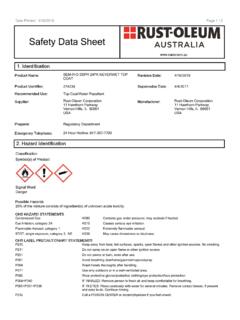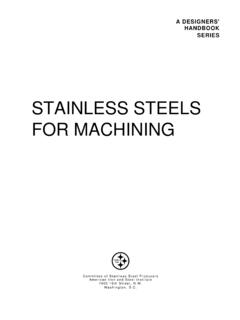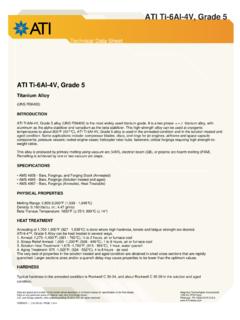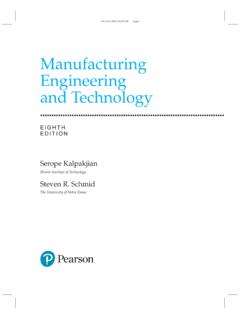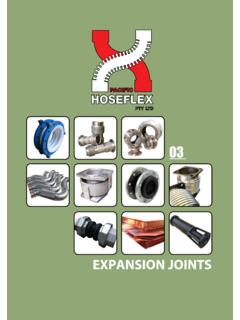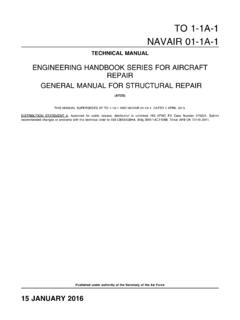Transcription of Safety Data Sheet - Rust-Oleum
1 Date Printed: 10/15/2019 Page 1 / 5. Safety Data Sheet * Trusted Quality Since 1921 *. 1. Identification Product Name: PRO 1-GL 2PK Safety YELLOW Revision Date: 10/15/2019. Product Identifier: 7543402 Supercedes Date: 3/27/2019. Recommended Use: Topcoat/Alkyd Supplier: Rust-Oleum Corporation Manufacturer: Rust-Oleum Corporation 11 Hawthorn Parkway 11 Hawthorn Parkway Vernon Hills, IL 60061 Vernon Hills, IL 60061. USA USA. Preparer: Regulatory Department Emergency Telephone: 24 Hour Hotline: 847-367-7700. 2. Hazard Identification Classification Symbol(s) of Product Signal Word Danger Possible Hazards 6% of the mixture consists of ingredient(s) of unknown acute toxicity.
2 GHS HAZARD STATEMENTS. Carcinogenicity, category 1B H350 May cause cancer. Flammable Liquid, category 3 H226 Flammable liquid and vapour. Germ Cell Mutagenicity, category 1B H340 May cause genetic defects. Skin Sensitizer, category 1 H317 May cause an allergic skin reaction. GHS LABEL PRECAUTIONARY STATEMENTS. P201 Obtain special instructions before use. P210 Keep away from heat, hot surfaces, sparks, open flames and other ignition sources. No smoking. P233 Keep container tightly closed. P261 Avoid breathing dust/fume/gas/mist/vapors/spray. P272 Contaminated work clothing should not be allowed out of the workplace.
3 P280 Wear protective gloves/protective clothing/eye protection/face protection. P302+P352 IF ON SKIN: Wash with plenty of soap and water. P303+P361+P353 IF ON SKIN (or hair): Take off immediately all contaminated clothing. Rinse skin with water/. shower. P308+P313 IF exposed or concerned: Get medical advice/attention. P321 For specific treatment see label P333+P313 If skin irritation or rash occurs: Get medical advice/attention. Date Printed: 10/15/2019 Page 2 / 5. P370+P378 In case of fire: Use alcohol film forming foam, carbon dioxide, dry chemical, dry sand to extinguish.
4 P403+P235 Store in a well-ventilated place. Keep cool. P405 Store locked up. P501 Dispose of contents/container in accordance with local, regional and national regulations. GHS SDS PRECAUTIONARY STATEMENTS. P240 Ground/bond container and receiving equipment. P241 Use explosion-proof electrical/ventilating/lighting/equipmen t. P242 Use only non-sparking tools. P243 Take precautionary measures against static discharge. P363 Wash contaminated clothing before reuse. 3. Composition / Information On Ingredients HAZARDOUS SUBSTANCES. Chemical Name CAS-No. GHS Symbols GHS Statements Range Hydrotreated Light Distillate 64742-47-8 25-50 GHS08 H304.
5 titanium Dioxide 13463-67-7 Not Available Not Available Methyl Ethyl Ketoxime 96-29-7 GHS05-GHS06 H302-312-317-318-331. GHS02-GHS07- Ethylbenzene 100-41-4 H225-304-332-351-373. GHS08. Naphtha, Hydrotreated Heavy 64742-48-9 GHS08 H304-340-350. Cobalt 2-Ethylhexanoate 136-52-7 Not Available Not Available 4. First-Aid Measures FIRST AID - EYE CONTACT: Immediately flush eyes with plenty of water for at least 15 minutes holding eyelids open. Get medical attention. Do NOT allow rubbing of eyes or keeping eyes closed. FIRST AID - SKIN CONTACT: Wash skin with soap and water.
6 Remove contaminated clothing. Get medical attention if irritation develops or persists. FIRST AID - INHALATION: Remove to fresh air. If not breathing, give artificial respiration. If breathing is difficult, give oxygen. Get immediate medical attention. Do NOT use mouth-to-mouth resuscitation. If you experience difficulty in breathing, leave the area to obtain fresh air. If continued difficulty is experienced, get medical assistance immediately. FIRST AID - INGESTION: If swallowed, get medical attention. 5. Fire-Fighting Measures EXTINGUISHING MEDIA: Alcohol Film forming Foam, Carbon Dioxide, Dry Chemical, Dry Sand, Water Fog UNUSUAL FIRE AND EXPLOSION HAZARDS: Closed containers may explode when exposed to extreme heat due to buildup of steam.
7 Keep containers tightly closed. Combustible liquid and vapor. No unusual fire or explosion hazards noted. SPECIAL FIREFIGHTING PROCEDURES: Evacuate area and fight fire from a safe distance. Use water spray to keep fire-exposed containers cool. Containers may explode when heated. Special Fire and Explosion Hazard (Combustible Dust): No Information 6. Accidental Release Measures STEPS TO BE TAKEN IF MATERIAL IS RELEASED OR SPILLED: Remove all sources of ignition, ventilate area and remove with inert absorbent and non-sparking tools. Dispose of according to local, state (provincial) and federal regulations.
8 Do not incinerate closed containers. Date Printed: 10/15/2019 Page 3 / 5. 7. Handling and Storage HANDLING: Wash thoroughly after handling. Wash hands before eating. Remove contaminated clothing and launder before reuse. Use only with adequate ventilation. Follow all SDS and label precautions even after container is emptied because it may retain product residues. Avoid breathing fumes, vapors, or mist. Avoid contact with eyes, skin and clothing. STORAGE: Store in a dry, well ventilated place. Keep container tightly closed when not in use. Keep containers tightly closed.
9 Isolate from heat, electrical equipment, sparks and open flame. Avoid excess heat. Advice on Safe Handling of Combustible Dust: No Information 8. Exposure Controls / Personal Protection Weight % ACGIH TLV- ACGIH TLV- OSHA PEL- Chemical Name CAS-No. Less Than TWA STEL. OSHA PEL-TWA. CEILING. Hydrotreated Light Distillate 64742-47-8 titanium Dioxide 13463-67-7 10 mg/m3 15 mg/m3 Methyl Ethyl Ketoxime 96-29-7 10 ppm Ethylbenzene 100-41-4 20 ppm 100 ppm Naphtha, Hydrotreated Heavy 64742-48-9 Cobalt 2-Ethylhexanoate 136-52-7 PERSONAL PROTECTION. ENGINEERING CONTROLS: Use process enclosures, local exhaust ventilation, or other engineering controls to control airborne levels below recommended exposure limits.
10 Prevent build-up of vapors by opening all doors and windows to achieve cross- ventilation. RESPIRATORY PROTECTION: A respiratory protection program that meets OSHA and ANSI requirements must be followed whenever workplace conditions warrant a respirator's use. SKIN PROTECTION: Use gloves to prevent prolonged skin contact. Nitrile or Neoprene gloves may afford adequate skin protection. EYE PROTECTION: Use Safety eyewear designed to protect against splash of liquids. OTHER PROTECTIVE EQUIPMENT: Refer to Safety supervisor or industrial hygienist for further guidance regarding types of personal protective equipment and their applications.
